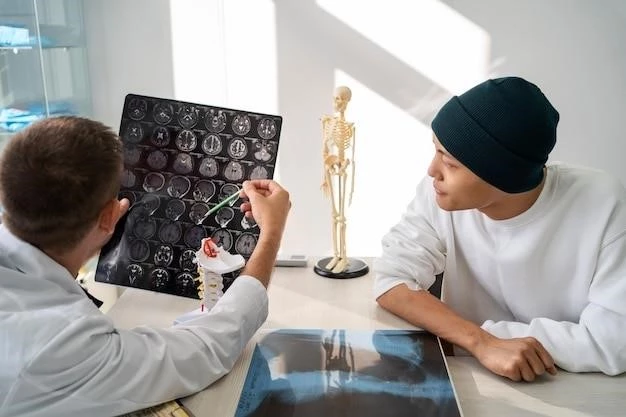Introduction to Tuberous Sclerosis, Type 2
Tuberous sclerosis complex (TSC) is a hereditary disease impacting multiple organs from mutations in TSC1 or TSC2 genes;
Overview of Tuberous Sclerosis Complex (TSC)
Tuberous sclerosis complex (TSC) is a hereditary disorder characterized by non-cancerous tumors affecting various organs due to mutations in TSC1 or TSC2 genes․ The prevalence is approximately 1 in 5500 individuals, with manifestations impacting the skin, brain, kidneys, heart, lungs, and eyes․ The condition is typified by abnormal cell growth and can lead to complications such as seizures, cognitive issues, and developmental delays․
Overview of Tuberous Sclerosis Complex (TSC)
TSC is a hereditary disorder impacting various organs due to mutations in TSC1 or TSC2 genes․ Incidence is around 1 in 5500 individuals․
Diverse Organ System Involvement
Tuberous Sclerosis Complex (TSC) is a hereditary disorder that affects various organs due to mutations in TSC1 or TSC2 genes․ The condition can manifest in the skin, brain, kidneys, heart, lungs, and eyes, leading to a wide range of symptoms․ Individual susceptibility and severity vary, making the disease complex to manage․ The prevalence of TSC highlights the importance of understanding its diverse organ system involvement for accurate diagnosis and effective treatment․
Life-Threatening Manifestations
Tuberous Sclerosis Complex (TSC) presents various life-threatening manifestations due to the involvement of multiple organs․ Complications such as seizures, cardiac rhabdomyomas, renal angiomyolipomas, and lung disease can pose significant risks to affected individuals․ Prompt diagnosis and appropriate management are crucial in addressing these critical aspects of the disease․
Comparison with Neurofibromatosis Type 1
Tuberous Sclerosis Complex and Neurofibromatosis Type 1 are autosomal dominant disorders, characterized by involvement of multiple tissues and organs․
Both Tuberous Sclerosis Complex (TSC) and Neurofibromatosis Type 1 (NF1) are autosomal dominant disorders characterized by genetic mutations impacting multiple tissues and organs․ While they share similarities such as the involvement of various organs, unique clinical features differentiate the two conditions․ Understanding these distinctions is crucial for accurate diagnosis and tailored management strategies․
Epilepsy in Tuberous Sclerosis Complex
Epilepsy is the prevailing neurological comorbidity in TSC, closely linked with cortical tubers and cognitive impairment․
Similarities and Differences
Both Tuberous Sclerosis Complex (TSC) and Neurofibromatosis Type 1 (NF1) share an autosomal dominant inheritance pattern and affect multiple tissues and organs․ Despite these similarities, distinct clinical features set them apart, underlining the importance of accurate diagnosis and personalized treatment for each condition․
Cognitive Dysfunction
Cognitive dysfunction is commonly associated with epilepsy in TSC due to cortical tubers affecting brain function․ The presence of cognitive impairment further complicates the management and care of individuals with TSC, highlighting the need for comprehensive support strategies․
Symptoms and Diagnosis of Tuberous Sclerosis Complex
Tuberous sclerosis causes non-cancerous growths in the skin, brain, eyes, kidneys, heart, and lungs․ Symptoms vary based on the location and size of the growths․
Non-Cancerous Tumors in Various Organs
Tuberous Sclerosis Complex (TSC) results in the growth of non-cancerous tumors in different organs such as the brain, kidneys, heart, skin, eyes, and lungs․ These tumors, known as hamartomas, can cause various health complications and require careful monitoring and management․
Common Symptoms and Diagnostic Methods
The symptoms of Tuberous Sclerosis Complex (TSC) result from noncancerous growths in various organs such as the brain, skin, eyes, kidneys, heart, and lungs․ Diagnosis involves a combination of clinical evaluation, imaging studies, and genetic testing to confirm the presence of TSC․ Common symptoms include seizures, cognitive impairments, skin abnormalities, and renal complications, necessitating a multidisciplinary approach for accurate diagnosis and management․

Genetics and Inheritance of Tuberous Sclerosis
Tuberous sclerosis is inherited in an autosomal dominant manner and is caused by mutations in TSC1 or TSC2 genes․
Autosomal Dominant Inheritance
Tuberous Sclerosis Complex (TSC) follows an autosomal dominant inheritance pattern, where a mutation in one copy of either the TSC1 or TSC2 gene can lead to the development of the disorder․ This genetic characteristic plays a crucial role in the transmission of TSC from one generation to the next٫ highlighting the importance of genetic counseling and testing for individuals and families at risk․
Mutations in TSC1 and TSC2 Genes
Tuberous Sclerosis Complex (TSC) is primarily caused by mutations in the TSC1 or TSC2 genes․ These genetic alterations can lead to the development of non-cancerous tumors in various organs٫ contributing to the diverse clinical manifestations observed in individuals with TSC․ Understanding the specific genetic mutations associated with TSC is essential for diagnosis٫ genetic counseling٫ and targeted treatment strategies․
Radiographic Manifestations of Tuberous Sclerosis
In Tuberous Sclerosis, radiographic findings commonly include cortical or subependymal tubers, white matter abnormalities, renal angiomyolipomas, and cardiac rhabdomyomas․
Common Radiographic Findings
Radiographic manifestations of Tuberous Sclerosis often include cortical or subependymal tubers, white matter abnormalities, renal angiomyolipomas, and cardiac rhabdomyomas․ These findings play a crucial role in the diagnosis and management of the condition․
Treatment and Management of Tuberous Sclerosis Complex
The treatment of tuberous sclerosis complex involves a multidisciplinary approach focusing on symptom management and regular monitoring of the non-cancerous tumors in various affected organs․ Treatment strategies may include medication, surgery, and other targeted interventions to address specific symptoms and complications associated with the disease․
Current Therapeutic Approaches
The current therapeutic approaches for Tuberous Sclerosis Complex (TSC) involve a multidisciplinary strategy focusing on symptom management and regular monitoring of non-cancerous tumors in various affected organs․ Treatment modalities often include medications, surgical interventions, and targeted therapies to address specific symptoms and organ complications associated with TSC․ Additionally, advancements in research are paving the way for innovative treatment options to enhance the quality of life for individuals living with TSC․

Ongoing Research and Future Prospects
Research into Tuberous Sclerosis Complex focuses on developing targeted treatments to manage symptoms, prevent complications, and improve the quality of life for affected individuals․ Ongoing studies aim to identify novel therapeutic approaches, enhance early diagnosis, and further understand the underlying genetic and molecular mechanisms of the disease․ These advancements offer hope for more effective interventions and outcomes in the future․
Development of Potential Treatments
Research efforts are focused on developing novel targeted treatments for Tuberous Sclerosis Complex to address symptoms, prevent complications, and improve patient outcomes․ Ongoing studies aim to uncover innovative therapeutic approaches, enhance early detection methods, and deepen our understanding of the genetic and molecular mechanisms underlying the disease․ The advancement of new treatment options holds promise for more effective management and care of individuals with Tuberous Sclerosis in the future․
